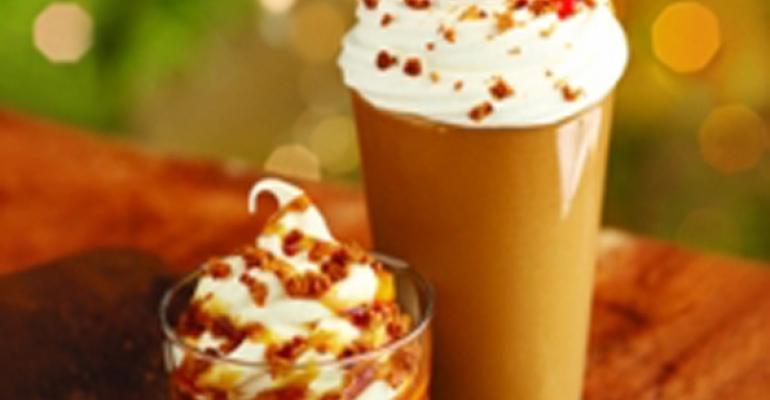Just as the season for pumpkin-pie shakes and gingerbread cookie ice cream is about to begin, new research indicates that interest in indulgent treats among quick-service customers is waning.
But that doesn’t mean restaurants should stop offering indulgent treats, said a report issued this week by Sandelman & Associates, a market-share research firm that specializes in the quick-service segment. Rather, restaurant chains need to understand the varying factors that motivate quick-service consumers.
RELATED
• Krystal moves headquarters to Atlanta
• Survey: Consumers name CiCi's favorite pizza chain
• More quick-service restaurant news
For years, quick-service chains have sought to differentiate themselves by adding indulgent and craveable items to the menu, particularly around the fall and winter holiday seasons. Just this week, for example, Jack in the Box brought back its perennial pumpkin pie and eggnog shakes and Burger King rolled out gingerbread sundaes and shakes.
Since 2008, however, consumers have placed less importance on indulgent items. Five years ago, about 53 percent of consumers said indulgence was extremely or very important in choosing a quick-service restaurant, but that number has shrunk to 46 percent in the first half of 2012, according to Sandelman surveys.
In the most recent survey of about 1,200 monthly quick-service diners in April through June this year, Sandelman asked consumers how they define indulgence. About 70 percent of respondents described it as a dessert or sweet treat, said Jeff Davis, president of Sandelman & Associates.
 The report noted that quick-service customers are increasingly falling into two camps: “indulgence seekers,” or those who are likely to choose a brand because of a decadent treat, and “indulgence avoiders,” or those who do not see the offer of such treats as a good thing. While there were no clear demographic lines separating indulgence seekers from avoiders, Davis said women are more likely to be seekers. Indulgence seekers also tend to give a higher rating to brands that have a variety of treats on the menu, the survey found.
The report noted that quick-service customers are increasingly falling into two camps: “indulgence seekers,” or those who are likely to choose a brand because of a decadent treat, and “indulgence avoiders,” or those who do not see the offer of such treats as a good thing. While there were no clear demographic lines separating indulgence seekers from avoiders, Davis said women are more likely to be seekers. Indulgence seekers also tend to give a higher rating to brands that have a variety of treats on the menu, the survey found.
The number of quick-service diners who said they intend to cut back on buying indulgent items in the next few months far outweighed those who said they would buy more treats, the report found. That could either indicate an intention to eat healthier, or it could reflect the spontaneous nature of indulgence.
Among indulgence seekers, 12 percent said they would buy indulgent items more often in the next month or two, while only 2 percent of avoiders did. Conversely, 34 percent of avoiders said they would buy indulgent items less often, while 20 percent of seekers said the same.
Davis said the quick-service brand most favored by indulgence seekers was Burger King, where seekers spent 8 percent of visits but where avoiders spent 5 percent of visits. Indulgence avoiders tend to favor Subway, where avoiders went 10 percent of the time, compared to 7 percent for seekers, as well as Chick-fil-A, where avoiders spent 5 percent of their visits versus 2 percent for seekers.
In general, sweet treats tend to work as an incremental sale that could create more occasions for some users, noted Davis. But offering more healthful options could also draw in the avoiders those quick-service chains may be missing, he added. “Having that option is key,” he said.
Editor's Note: This story was updated to clarify data on visits to specific brands by indulgence seekers and avoiders.
Contact Lisa Jennings at [email protected].
Follow her on Twitter: @livetodineout

